Magnifying Glass Uses: More Than Meets the Eye
November 3, 2021
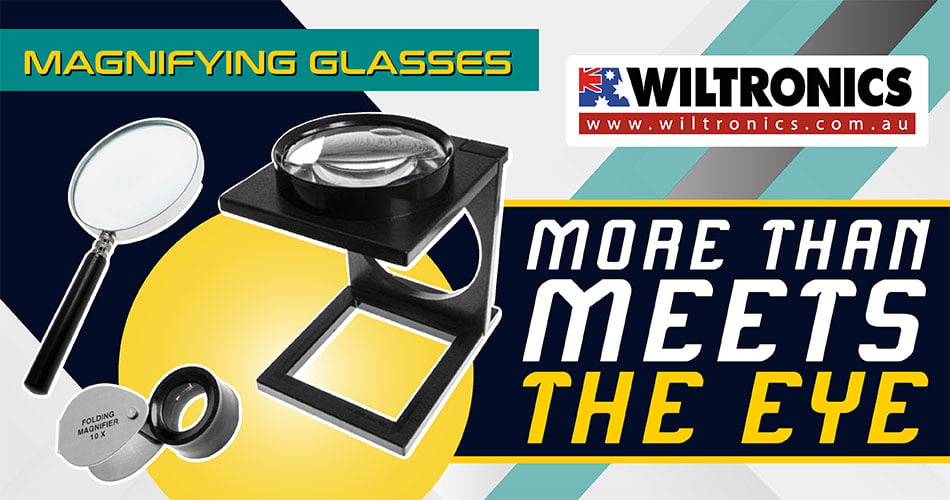
Magnifying glass uses can vary, despite having one job.
Did you ever try playing detective when you were a child? Searching for the smallest of clues was your goal, and what did you need other than a tweed suit and a cool hat?
A magnifying glass.
Sherlock Holmes may have used his handy magnifier to search for clues and solve mysteries. But did you know that people all over the world use this magnifying tool for all sorts of tasks on a daily basis?
In this post, we will answer a few most asked questions such as:
- How does a magnifying glass make things look bigger?
- In what ways are magnifying glasses used today?
Read on to find out more answers!
Magnifying Glass Uses: What Is It?
Magnifying glasses are commonly used in most laboratories; they are the simplest form of a basic microscope.
Magnifying glasses are optical devices used for viewing details of objects with magnification.
They are sometimes regarded as being the same as loupes. But precisely speaking—a loupe is used at a close distance from the eye.
Magnifying glasses, in contrast, are used at a larger distance from the eye and have a longer focal length of 125mm or more. They consist of a single convex lens that magnifies an object when the glass is held up to it.
How Does a Magnifying Glass Make Things Look Bigger?
Magnifying glasses work thanks to the simple principles of optical physics. They have broadened our understanding of nature, enabling us to see in great detail what we otherwise would not see at all.
But what is the physics behind it?
A magnifying glass is a convex lens, meaning it is curved outward—like the underside of a spoon. It uses a convex lens as this type of lens causes light rays to converge or come together.
A lens allows light rays to pass through it and bends, or refracts them. Light rays from the object enter the glass in parallel but are refracted by the lens, creating a visual image on the retina of your eye. This image then appears to be larger than the object itself.
How so? Your eyes trace the light rays back in straight lines to the virtual image, which is farther from your eyes than the object is. Thus it makes things look bigger.
Magnifying Glass Uses in Human Endeavours
Back in the day, magnifying glasses worked so well that they have became the foundation of great advancement in science, especially in biology and astronomy.
Today, they are widely used for daily simple tasks, such as for reading small texts. Or for scientific tasks like studying microscopic organisms.
Handheld magnifying glasses play important roles in many modern devices as well. Great examples of this are binoculars, cameras, and telescopes.
These instruments take advantage of the same magnifying lenses found in handheld units. But they do differ primarily in their arrangement and power.
Nevertheless, they enable us to see far-away things in excellent detail. For one, the magnifying glasses in astronomical telescopes.
Using a telescope allows us to view breathtaking images of distant planets, galaxies and other heavenly objects. Meanwhile, birdwatchers can enjoy an enhanced view of their targets with binoculars.
Different Types of Magnifying Glasses
There are many types of magnifying devices, but the ones listed below are the most common kind you will find in the market.
1. Binocular magnifiers
This type of magnifying glass is worn around the head, either alone or over prescription or safety eyeglasses. Binocular magnifiers are commonly used for close-up precision.
Some models come with an adjustable headband or a flip-up frame, allowing the user to move the magnifier out of view.
2. Desktop video magnifiers
These non-portable devices are typically larger and are placed on the surface of a table or desk, or in one fixed location. They are used for reading the pages of a document or placed in the living room for watching TV.
Desktop video magnifiers come with an integrated reading table, allowing the user to read a newspaper, write a letter, and more. Newer models are equipped with HD monitors and optical character recognition.
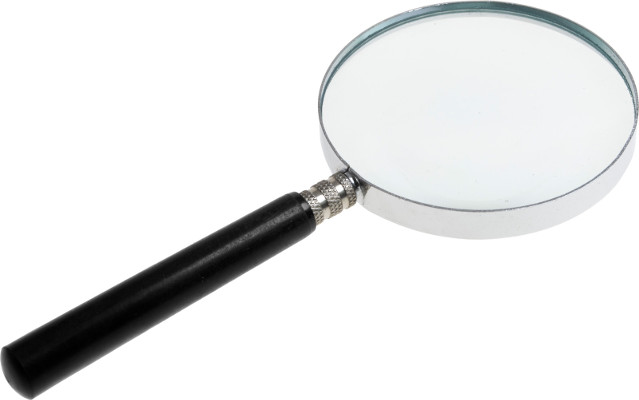
3. Handheld magnifiers
Handheld magnifiers are commonly used by individuals with low vision. They come in handy for simple tasks like reading a label on a medicine bottle, checking a price tag or a map, to name a few.
Plus, they are portable enough to fit into a pocket or small pouch. Even better, handheld magnifiers are cheap.
If you are looking for one, check out this 75mm diameter magnifying glass. It features a sturdy frame and a hard plastic handle for durability.
The model also comes with an acrylic lens with an inner circle 5X magnification while the main lens is 2.5X. And you might as well check the magnifying glasses in plastic material, which are robust and hard-wearing, not to mention the low cost!
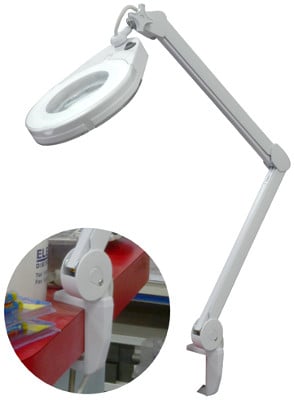
4. Magnifying lamps
A magnifying lamp is usually attached to a flexible arm that can be moved over the reading material. This type of magnifier is available in a variety of models that feature the following:
- Different magnification levels
- Illumination levels
- Types of light bulbs
- Colour of light emitted from the magnifier
- Size of the lens
- Weight of the magnifier
Check out our range of magnifying lamps here.
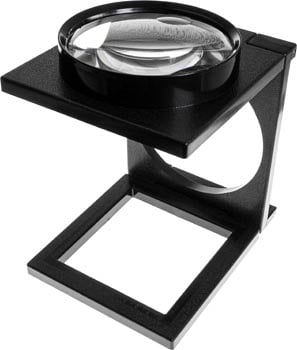
5. Freestanding magnifiers
Also known as stand magnifiers, they are attached to small legs or other supports for a hands-free operation. They sit above the page in a frame that is fixed or at a tilt.
The design helps maintain a distance from the reading material and remain in focus, even if the user has unsteady hands. Just like this freestanding magnifying glass.
It features a large 115mm lens and the ability to fold completely flat for storage purposes. You also might want to check this collapsible mini magnifier with LED.
As the name suggests, it collapses down into a compact size for storage or travel. But opens up into a powerful eight dioptre magnifier, complete with LED lighting.
It only needs 3 x AAA batteries for the light, so it’ll go anywhere you do.
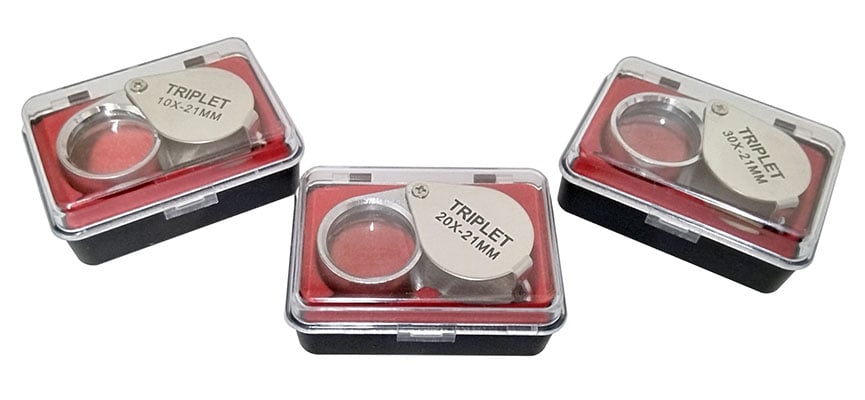
6. Pocket magnifiers
This small type of magnifying glass are usually housed in hard plastic cases that slide or snap open and shut. Some available models come with two or more lenses, which can be used individually or in combination.
If you are looking for one, then you are going to like this very compact folding pocket magnifier with 10x magnification. It is ideal for many uses in and out of the lab.
Magnifying Glass Uses: The Bottom Line
With a magnifying glass in hand, you have the power of making the tiniest details seem larger than life. It is not only used by detectives, pretty much anyone can find a use for one.
Once you have a magnifying glass in hand, get outside and explore! Get down on your knees and use it to reveal the tiniest things around you.
We hope you enjoyed this brief lesson on magnifying glasses!
© Wiltronics Research Pty Ltd 2021
Write a Comment
You must be logged in to post a comment.